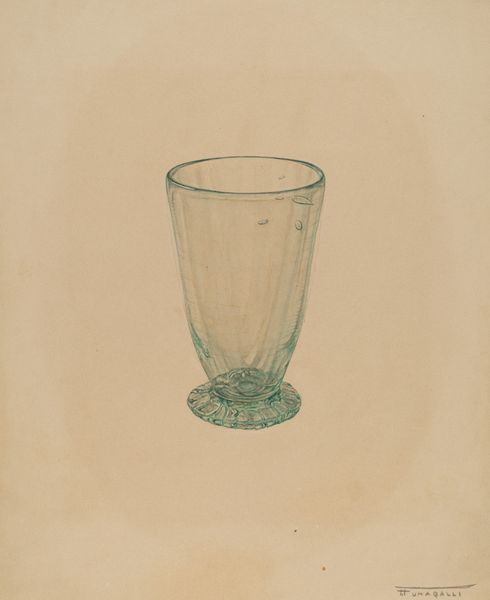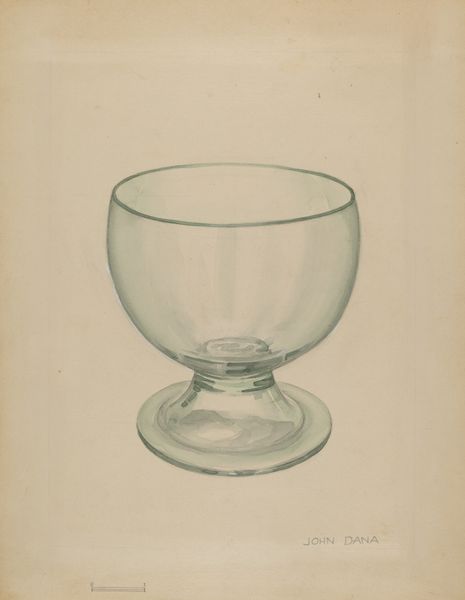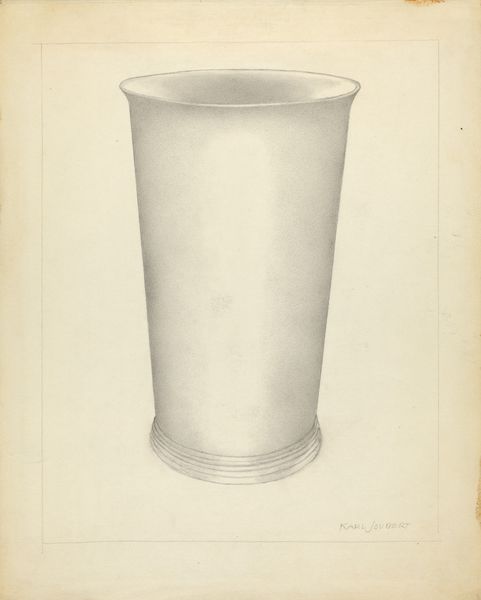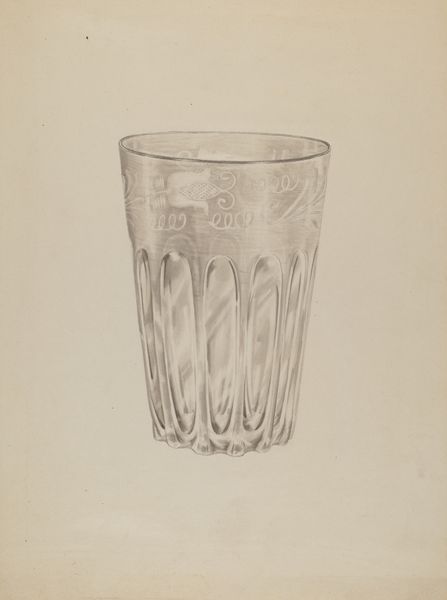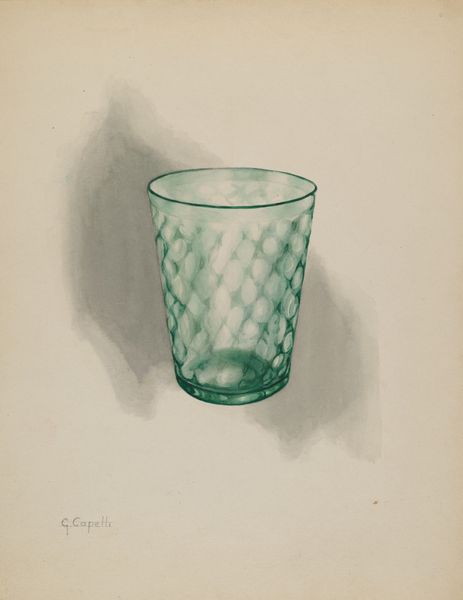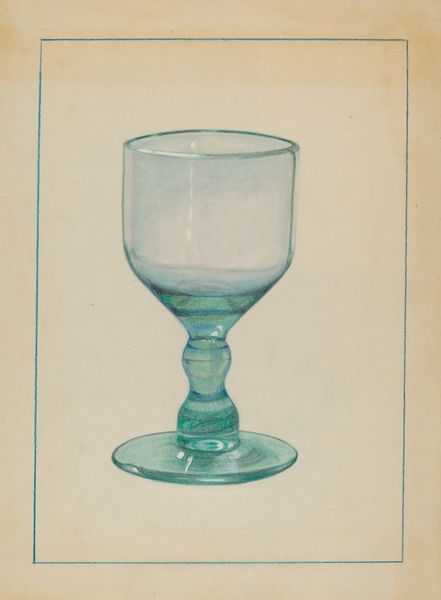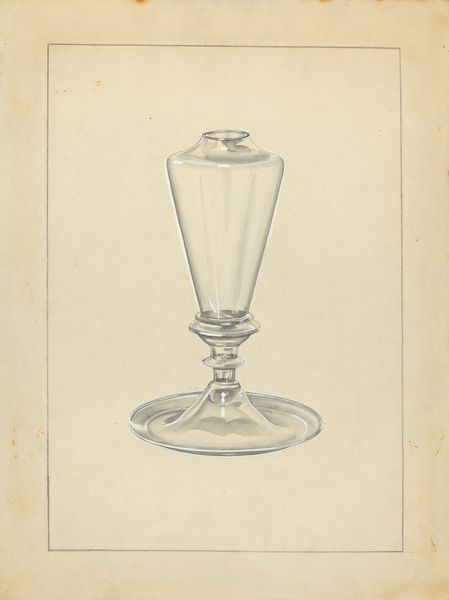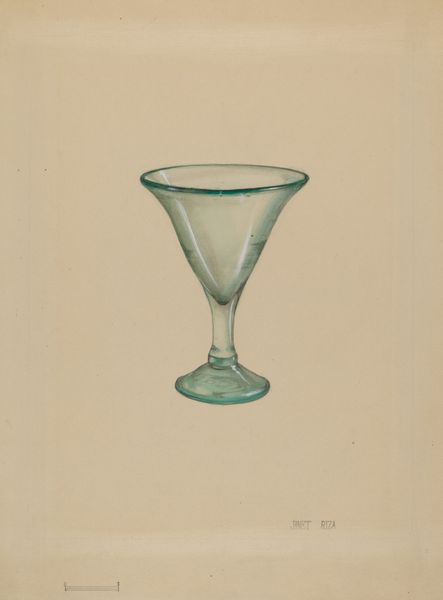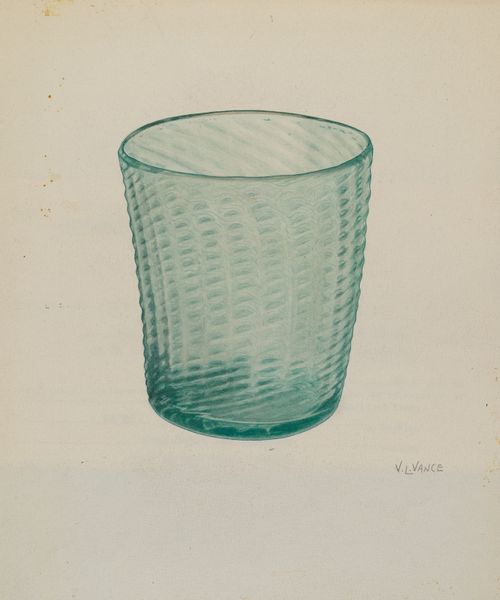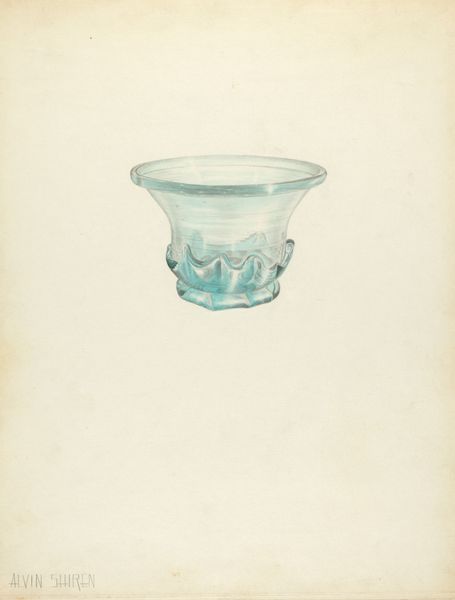
Dimensions: overall: 29.3 x 22.7 cm (11 9/16 x 8 15/16 in.) Original IAD Object: 4" high
Copyright: National Gallery of Art: CC0 1.0
Curator: At first glance, this watercolour drawing of a glass conveys a feeling of lightness. Editor: It definitely evokes a certain kind of delicate nostalgia. Before us we have Janet Riza’s “Toddy Glass”, completed sometime between 1935 and 1942. What strikes me about this unassuming piece is its seeming ordinariness. Curator: But the ordinary can hold a surprising amount, don't you think? The choice of a glass is intriguing – a vessel, pregnant with possibilities. The transparency allows light to pass through, like a moment of clarity or insight. I’m drawn to that almost ethereal quality given to the depiction through the use of watercolor. Editor: Absolutely, but what does it hold? The drawing emerged during the Great Depression; what did having such delicate objects mean to households at this time, especially working class or poor families? Is the Toddy Glass aspiration, a simple tool to briefly escape harsh material reality, or something else entirely? How do we contextualize it during this historical period? Curator: I see your point about context. What this drawing lacks in bold action, it gains in its function as a carrier of meanings, of long-established memory, even in the quotidian objects that were important in family life. The very act of depiction elevates the glass, transforming the mundane into a significant icon of survival. Editor: Perhaps you’re right; elevating such an everyday object could be read as an act of resistance against despair. Viewing "Toddy Glass" prompts questions regarding cultural value, labour, and the role art can have during periods of adversity. Curator: It serves as a quiet reminder. Editor: Exactly. And from this delicate object, we discover so much complexity, so many points of view.
Comments
No comments
Be the first to comment and join the conversation on the ultimate creative platform.

